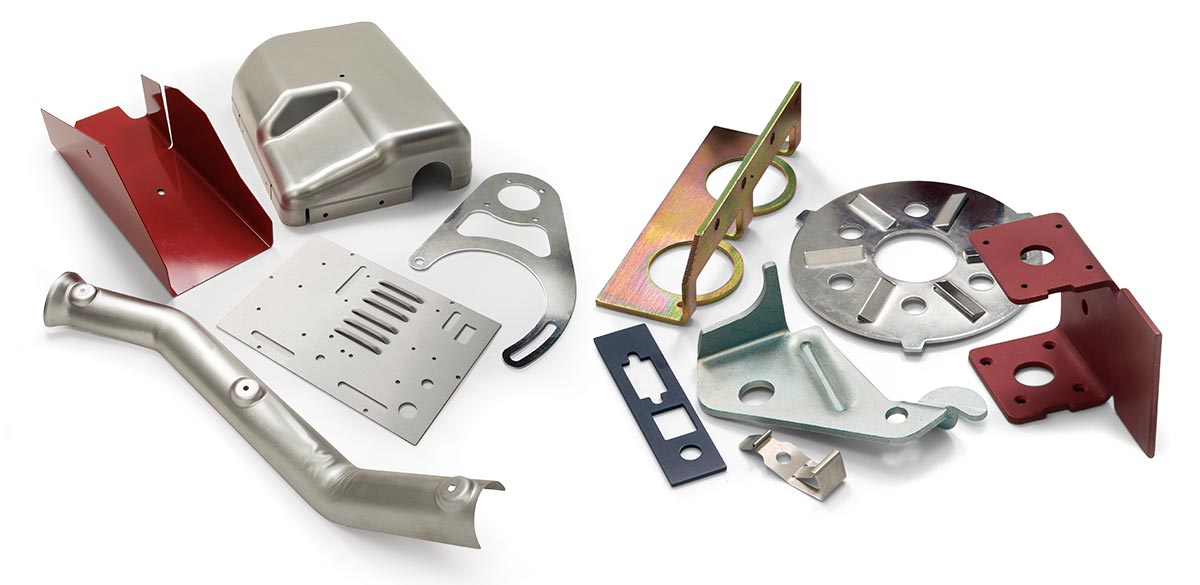Metal Stamping Solutions: Precision Manufacturing for an array of Industries
Metal Stamping Solutions: Precision Manufacturing for an array of Industries
Blog Article
Metal stamping services play a crucial role in modern manufacturing, offering a cost-effective and scalable solution for producing metal components rich in precision and repeatability. From the automotive and aerospace sectors to electronics and consumer goods, metal stamping is a foundational process that supports innovation and production across numerous industries.
This article explores basic principles of Metal Stamping Solutions, the various types of stamping processes, materials used, applications, as well as the benefits of outsourcing to your professional metal stamping vendor.
What is Metal Stamping?
Metal stamping is often a manufacturing method that involves by using a stamping press and die to shape or cut metal into specific forms. It typically uses sheet metal, that's fed in to a press the place where a tool and die surface forms the metal to the desired shape. Common stamping operations include:
* Blanking: Cutting an appartment piece of metal from the larger sheet.
* Piercing: Punching holes in the metal.
* Bending: Deforming the metal along a straight line.
* Forming: Deforming the metal into complex shapes without cutting it.
* Drawing: Stretching the metal into a desired shape, often employed to make cans and also other hollow shapes.
These processes can be executed in a single-stage or through progressive dies, which permit multiple operations in one machine cycle for greater efficiency.
Types of Metal Stamping Services
1. Progressive Die Stamping: In this method, a strip of metal passes through several stations in a very die, with each station after a different operation. It’s well suited for high-volume production runs.
2. Deep Draw Stamping: This process is used to create parts which might be deeper compared to what they are wide. It’s commonly used in the production of automotive components, kitchen sink, and appliance housings.
3. Fourslide Stamping: This technique uses multiple slides to shape the metal from the 3 angles simultaneously, ideal for complex components requiring multiple bends.
4. Transfer Die Stamping: Used for larger parts, this technique transfers the workpiece in one station to the next by using a mechanical transport system.
Benefits of Metal Stamping
* High Precision and Consistency: Stamping ensures tight tolerances and uniformity, that is essential for parts that require exact specifications.
* Cost-Effective for High Volumes: Once the dies are manufactured, metal stamping becomes highly efficient and economical for producing large quantities.
* Material Versatility: A wide range of metals may be stamped, including aluminum, steel, stainless steel, copper, and brass.
* Automation-Friendly: Metal stamping processes can be automated, reducing labor costs and increasing production speeds.
Applications of Metal Stamping
Metal stamping is integral to many people industries. For example:
* Automotive: Produces body panels, brackets, chassis components, and much more.
* Aerospace: Manufactures lightweight, durable parts for aircraft and spacecraft.
* Electronics: Creates precise components like connectors, contacts, and shields.
* Medical: Produces surgical instruments, implantable components, and housings for medical devices.
* Consumer Goods: Used inside production of appliances, tools, and furniture hardware.
Choosing a Metal Stamping Service Provider
When picking out a metal stamping supplier, consider the following:
* Technical Capabilities: Ensure the provider are designed for your part size, complexity, and material requirements.
* Tooling Expertise: Look for in-house tooling design and maintenance for faster turnaround and much better quality control.
* Quality Assurance: Check for certifications to ensure consistent quality and compliance with industry standards.
* Lead Time and Scalability: Assess if the provider can meet your production timeline and scale since your needs grow.
* Value-Added Services: Some companies offer additional services like welding, assembly, plating, and packaging, streamlining the fabrication process.
Metal stamping services really are a backbone of commercial manufacturing, enabling the mass output of high-precision parts efficiently and reliably. With the right partner, businesses can leverage stamping technology to relieve costs, maintain high quality, and accelerate time-to-market. As industries still demand more complex and lightweight components, the significance and sophistication of metal stamping services are merely expected to grow.